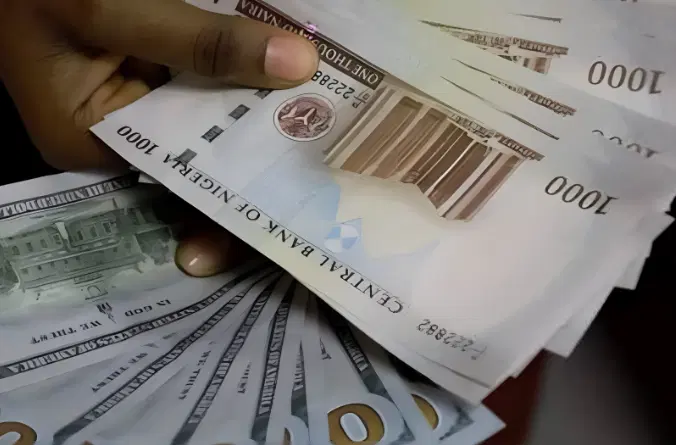There are indications that the nation’s currency has come under fresh demand pressure in the parallel market with significant depreciation recorded in the past week.
Yesterday, parallel market dealers traded at N1,705/ $1.00 down from N1,655/$1.00 a week ago, with sustained day-to-day slide.
Vanguard’s Naira watch indicates the steady slide is happening for the first time in several weeks unlike the daily fluctuation within a narrow band of between N1645 and N1,655/$1.00 recorded in the past two months.
Dealers in the parallel market told Vanguard that there was an indication of supply shortfalls in the past two weeks which may have sparked the depreciation in the market.

The development may have also affected the official market segment as data from FMDQ, shows the indicative exchange rate for Nigeria Autonomous Foreign Exchange Market, NAFEM, depreciated to N1541.94/$1.0 yesterday from N1540.78/ $1.0 over the weekend, indicating a 96 kobo depreciation.
The exchange rate development in the third quarter of 2024, Q4’24, also indicated a reversal of the positive trend recorded towards the end of last year.
In a surprising positive trend, the Naira closed last year in the parallel market at N1,215/$1.00, after it had previously hit N1,800/$1.0 quarter average in the third quarter of 2023.
The local currency further resumed the new year 2024 in a positive trend with an appreciation at N1,220/$1.0.
However, the trend reversed in the second quarter of the year with steady depreciation to a quarterly average of N1,620/$1.00 at the end of the second quarter, 2024.
After two months of stability at N1,630/$1.00 in most parts of the third quarter, the latest round of depreciation may have now started, with the fears that the high point of depreciation in Q4’23 may be underway for a repeat.
However, stakeholders in the economy have projected further rises in prices due to the continuous depreciation of the naira against the dollar especially in the parallel market.
Commenting on the development, the President Bank Customers Association of Nigeria, BCAN, Dr. Uju Ogubunka said: “The depreciation of the naira can be associated with demand chasing limited supply. It is the result of FX Supply gaps.
“The implications can be many but it shows the level of confidence or lack of it in the capacity of the country to meet the FX requirements in the market.
“Generally, it will impact on the cost of imported goods into the country and the prices at which such goods will eventually be sold on arrival.
“So, we should be prepared to complain more about high prices of goods in the market.”
Meanwhile, the volume of dollars traded (turnover) in the NAFEM rose year-on-year (YoY) by 61 per cent to $33.7 billion in the first nine months of 2024 (9M’24) from $20.9 billion in 9M’ 24.




